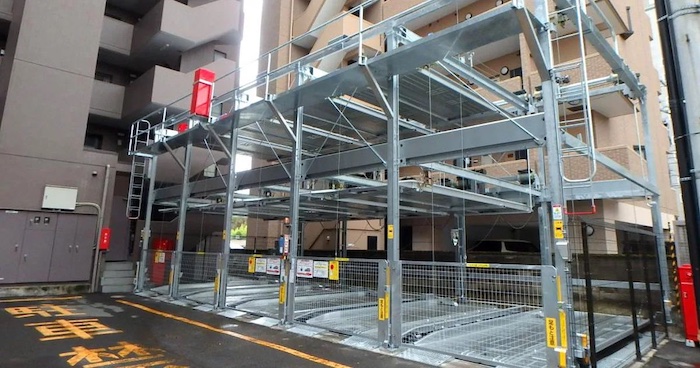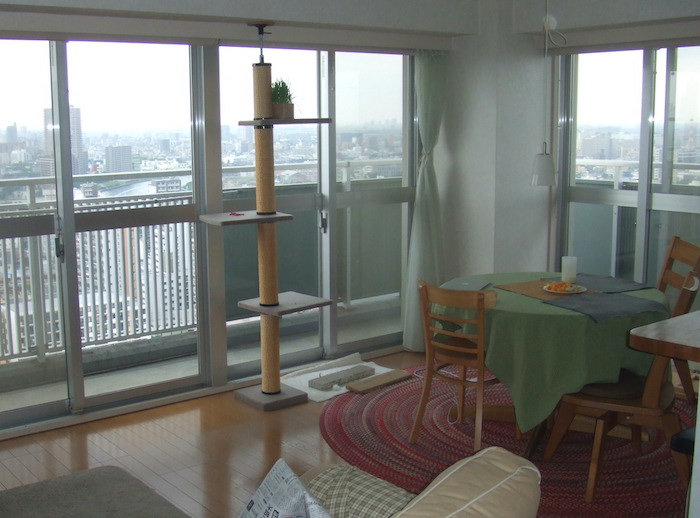Baby you can park my car

We sold our car in 2006 and have never replaced it, despite the fact that in the meantime we moved out of the city and into a suburb where a car is considered essential. Our original reason for getting rid of ours was the cost. We were paying for insurance and biannual inspections and parking just for the privilege of owning a vehicle that we really didn’t use that much. Living where we did we had ready access to several train lines and as we both aged what we once considered the convenience of having a car at our disposal faded, mainly because driving in Japan isn’t very enjoyable, what with the narrow streets, highway tolls, and difficulty with street parking. Though we’ve often thought of buying a car again for emergency use, we keep putting it off because it’s really nice not to have that burden any more. We manage just fine with bicycles and car share services.
The last place we lived had an underground mechanical parking facility. The space you rented was actually a pallet that moved vertically and horizontally. Parking lots are two-dimensional and thus require a lot of ground space. Mechanical parking garages, what we liked to call “3D parking lots,” used space both above and below the ground level to store cars, thus requiring less real estate. When we wanted to use our car, we went to the carousel assigned to us and, inputting a special code, “retrieved” the pallet by rearranging the other pallets in the carousel in order to place ours right at the front of the gate. This means, of course, that you have to wait for all the pallets to be rearranged properly, and sometimes it took a little time. It was especially troublesome if somebody else who had rented a pallet in your particular carousel was retrieving their car just as you arrived. On a few occasions, we needed our car quickly in order to make it in time for an appointment, and someone was already there getting their car so we had to wait. Fortunately, we never had, like, a medical emergency that required an automobile. The only saving grace was the rent, which was relatively cheap for Tokyo. Before living in that apartment we lived close to the Saitama border and rented a parking space from JR under the railroad tracks. It was unpaved but the tracks protected the vehicles from rain, and we paid ¥23,000 a month. The pallet we rented was ¥18,000 a month, and it was much closer to the center of the city.
Read More